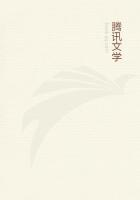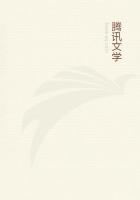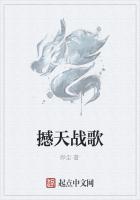Woolner's sculpture showed none of the rough assertion that Woolner himself showed, when he was not ****** supernatural effort to be courteous, but his busts were remarkable, and his work altogether was, in Palgrave's clamorous opinion, the best of his day. He took the matter of British art -- or want of art -- seriously, almost ferociously, as a personal grievance and torture; at times he was rather terrifying in the anarchistic wrath of his denunciation. as Henry Adams felt no responsibility for English art, and had no American art to offer for sacrifice, he listened with enjoyment to language much like Carlyle's, and accepted it without a qualm. On the other hand, as a third member of this critical group, he fell in with Stopford Brooke whose tastes lay in the same direction, and whose expression was modified by clerical propriety. Among these men, one wandered off into paths of education much too devious and slippery for an American foot to follow.
He would have done better to go on the race-track, as far as concerned a career.
Fortunately for him he knew too little ever to be an art-critic, still less an artist. For some things ignorance is good, and art is one of them.
He knew he knew nothing, and had not the trained eye or the keen instinct that trusted itself; but he was curious, as he went on, to find out how much others knew. He took Palgrave's word as final about a drawing of Rembrandt or Michael Angelo, and he trusted Woolner implicitly about a Turner; but when he quoted their authority to any dealer, the dealer pooh-poohed it, and declared that it had no weight in the trade. If he went to a sale of drawings or paintings, at Sotheby's or Christie's, an hour afterwards, he saw these same dealers watching Palgrave or Woolner for a point, and bidding over them. He rarely found two dealers agree in judgment. He once bought a water-color from the artist himself out of his studio, and had it doubted an hour afterwards by the dealer to whose place he took it for framing He was reduced to admit that he could not prove its authenticity; internal evidence was against it.
One morning in early July, 1867, Palgrave stopped at the Legation in Portland Place on his way downtown, and offered to take Adams to Sotheby's, where a small collection of old drawings was on show. The collection was rather a curious one, said to be that of Sir Anthony Westcomb, from Liverpool, with an undisturbed record of a century, but with nothing to attract notice.
Probably none but collectors or experts examined the portfolios. Some dozens of these were always on hand, following every sale, and especially on the lookout for old drawings, which became rarer every year. Turning rapidly over the numbers, Palgrave stopped at one containing several small drawings, one marked as Rembrandt, one as Rafael; and putting his finger on the Rafael, after careful examination; "I should buy this," he said; "it looks to me like one of those things that sell for five shillings one day, and fifty pounds the next." Adams marked it for a bid, and the next morning came down to the auction. The numbers sold slowly, and at noon he thought he might safely go to lunch. When he came back, half an hour afterwards, the drawing was gone. Much annoyed at his own stupidity, since Palgrave had expressly said he wanted the drawing for himself if he had not in a manner given it to Adams, the culprit waited for the sale to close, and then asked the clerk for the name of the buyer. It was Holloway, the art-dealer, near Covent Garden, whom he slightly knew. Going at once to the shop he waited till young Holloway came in, with his purchases under his arm, and without attempt at preface, he said: "You bought to-day, Mr. Holloway, a number that I wanted. Do you mind letting me have it?" Holloway took out the parcel, looked over the drawings, and said that he had bought the number for the sake of the Rembrandt, which he thought possibly genuine; taking that out, Adams might have the rest for the price he paid for the lot -- twelve shillings.
Thus, down to that moment, every expert in London had probably seen these drawings. Two of them -- only two -- had thought them worth buying at any price, and of these two, Palgrave chose the Rafael, Holloway the one marked as Rembrandt. Adams, the purchaser of the Rafael, knew nothing whatever on the subject, but thought he might credit himself with education to the value of twelve shillings, and call the drawing nothing. Such items of education commonly came higher.
He took the drawing to Palgrave. It was closely pasted to an old, rather thin, cardboard mount, and, on holding it up to the window, one could see lines on the reverse. "Take it down to Reed at the British Museum," said Palgrave; "he is Curator of the drawings, and, if you ask him, he will have it taken off the mount." Adams amused himself for a day or two by searching Rafael's works for the figure, which he found at last in the Parnasso, the figure of Horace, of which, as it happened -- though Adams did not know it -- the British Museum owned a much finer drawing. At last he took the dirty, little, unfinished red-chalk sketch to Reed whom he found in the Curator's room, with some of the finest Rafael drawings in existence, hanging on the walls. "Yes!" said Mr Reed; "I noticed this at the sale; but it's not Rafael!" Adams, feeling himself incompetent to discuss this subject, reported the result to Palgrave, who said that Reed knew nothing about it. Also this point lay beyond Adams's competence; but he noted that Reed was in the employ of the British Museum as Curator of the best -- or nearly the best -- collection in the world, especially of Rafaels, and that he bought for the Museum. As expert he had rejected both the Rafael and the Rembrandt at first-sight, and after his attention was recalled to the Rafael for a further opinion he rejected it again.
A week later, Adams returned for the drawing, which Mr. Reed took out of his drawer and gave him, saying with what seemed a little doubt or hesitation:

